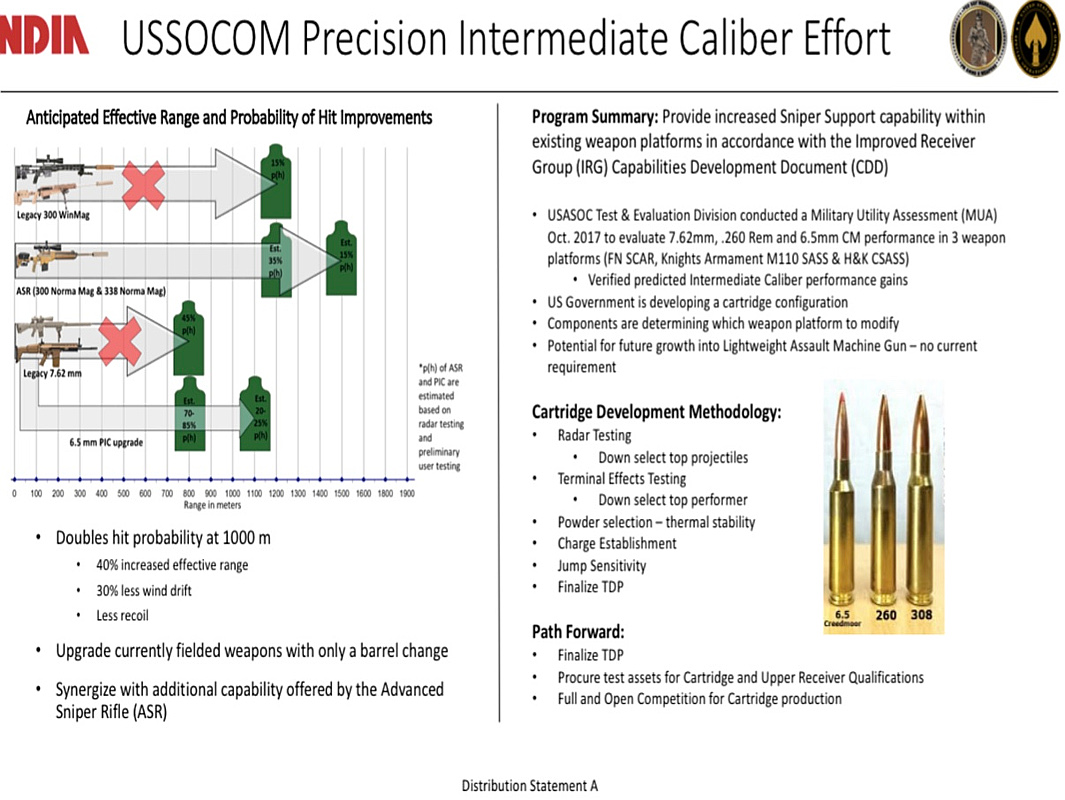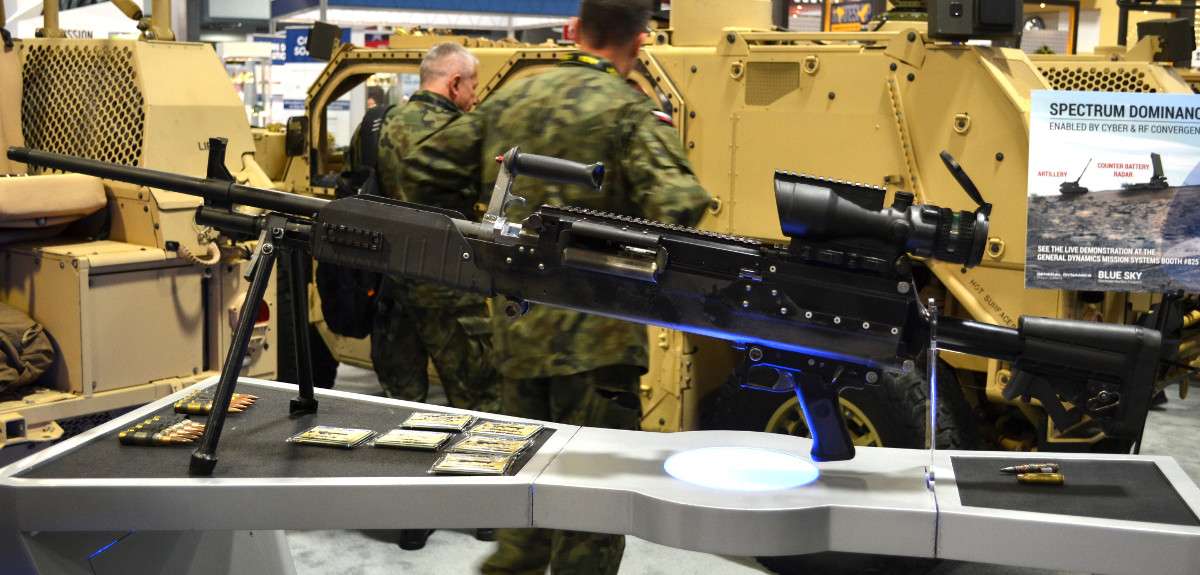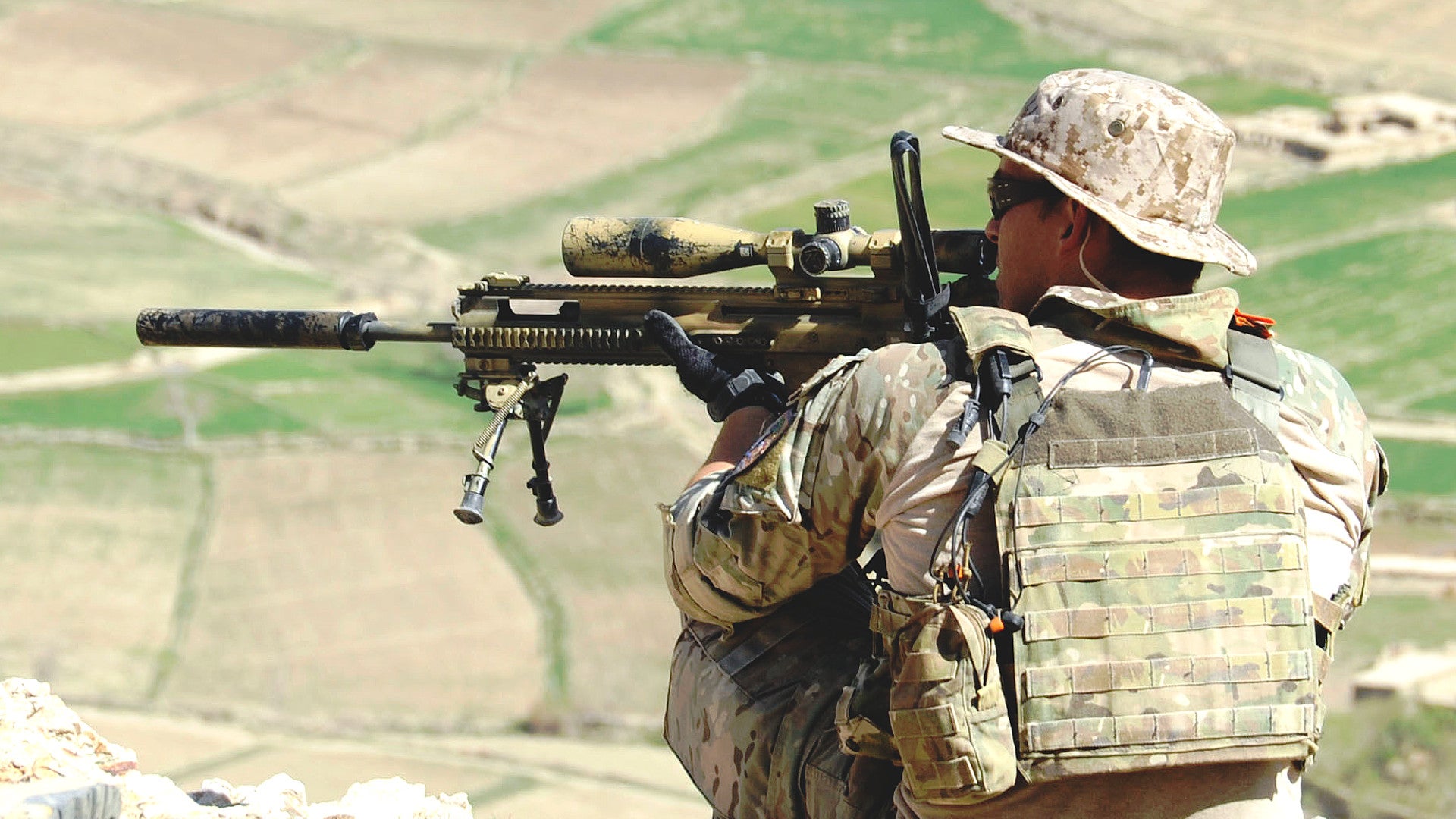U.S. Special Operations Command has revealed plans to replace a number of precision rifles across its components that use NATO-standard 7.62mm ammunition with new guns chambered for a smaller cartridge, the 6.5mm Creedmoor. It has also disclosed that it is developing a new “assault” machine gun that fires the same round, which is part of broader efforts to provide longer range, but still relatively lightweight fire support weapons.
U.S. Army Lieutenant Colonel Mark Owens, who is presently the Program Manager for Ammo, Weapons and Visual Augmentation Systems at Special Operations Command, gave the new details during an unclassified briefing at the National Defense Industry Association’s annual Armaments Conference earlier in May 2018. That special operations forces were considering the 6.5mm cartridge for precision weapons first emerged in 2017, but Soldier Systems Daily was first to report that this effort now includes a light machine gun, as well.
According to Owens’ presentation, in testing in 2017, special operators shooting rifles modified to fire 6.5mm Creedmoor were twice as likely to hit their targets compared those using control guns in the existing 7.62x51mm NATO cartridge. Special Operations Command also evaluated .260 Remington and collected data on the performance of all three types of ammunition in the FN Mk 20 Mod 0 Sniper Support Rifle, the Knight’s Armament Company M110 Semi-Automatic Sniper System (SASS), and Heckler and Koch M110A1 Compact Semi-Automatic Sniper System (CSASS).
The testing also showed that the 6.5mm versions of the weapons have 40 percent greater range and less recoil than their 7.62mm counterparts. The round was 30 percent less susceptible to wind drift, as well, making it more precise at those distances.

This matches up with preliminary information in a report from Military Times in April 2017. Both the 6.5mm Creedmoor and .260 Remington “stay supersonic longer, have less wind drift and better terminal performance than 7.62 mm ammunition,” unnamed Special Operations Command officials said at the time.
These performance characteristics mean that weapons such as the Mk 20 Mod 0, M110, and M110A1 are now adequately able to fill the “range gap” between standard individual rifles and precision, long-range sniper rifles. Owens’ brief included a chart showing that there had previously been a more than 650-foot gap between the maximum effective range of those weapons and the minimum distance at which snipers typically operate.

Since both 6.5mm Creedmoor and .260 Remington use modified 7.62x51mm cartridge cases, converting a weapon from one to the other is typically as easy as changing the barrel. AR-10-pattern rifles and derivatives are available on the commercial market in the United States in both calibers. The M110 and M110A1 are both derived from this platform. The Heckler and Koch gun’s main difference is that it uses a physical piston to cycle the action rather than siphoning propellant gas from the barrel and using that to directly push the internal components.
It is not clear whether or not Special Operations Command plans to use the shift in ammunition type as an opportunity to consolidate the total number of applicable weapons in use across its components. Owens’ presentation used the M110A1 CSASS as a standard-in for the future 6.5mm Creedmoor rifles, but there was no indication that this would be the universal platform. Special operators are set to begin receiving the new weapons in 2019.
At the same time, though, Owens unveiled a heretofore unknown plan to also develop a light machine gun, referred to as an “assualt machine gun,” also using the 6.5mm cartridge. This immediately makes sense from a logistical standpoint, since weapons in this category, such as the FN M240L and Mk 48 Mod 1 machine guns, presently fire the 7.62x51mm round.

Without the added commonality, units might find themselves having to carry an additional type of ammunition, which could be burdensome and prevent personnel from sharing resources in an emergency. Of course, it is unlikely that the machine gun would use the exact same type of 6.5mm ammunition as the rifles. Traditionally, the U.S. military has developed more precise rounds specifically for these types of marksman and precision rifles.
A machine gun in 6.5mm Creedmoor would almost certainly gain some of the range and accuracy benefits as the rifles, but in a package that should not be any heavier than the existing 7.62x51mm weapons. The Mk 48 Mod 1 is already nearly 10 pounds lighter than the standard M240B infantry light machine gun, making it far more handy and portable.

The reduced recoil from the 6.5mm Creedmoor might be a boon, as well. In order to make the Mk 48s as light as possible, these guns had a tendency to lose accuracy due to how much the weapon would shake during sustained firing. There were also problems with overheating and the gas system filling quickly with carbon, the latter issue leading to jamming unless operators thoroughly cleaned the weapon regularly. The Mod 1 upgrade package was supposed to mitigate many of these issues already, but the new ammunition might even further improve the situation with minimal effort.
It’s not the first time the U.S. military has considered doing this, either. In the late 1970s, the U.S. Army looked into adopting a light machine gun in a 6x45mm universal cartridge that would replace both certain 5.56x45mm rifles and 7.62x51mm light machine guns. Concerned with the logistical issues of adding a new cartridge, among others, the service eventually ditched that plan and adopted the 5.56mm M249 Squad Automatic Weapon instead.
It is possible that Special Operations Command’s new development might revive those older concepts across the U.S. military. The Army is already in the process of ironing out requirements for a new squad automatic weapon and is also investigating adopting new ammunition to go with it.
There would be a recent precedent for this type of cooperation. Special Operations Command and the U.S. Marine Corps continue to work together on a larger, lighter-weight medium machine gun firing the powerful .338 Norma Magnum cartridge.

This weapon, which you can read about in more detail here, offers range closer to the .50 M2 caliber heavy machine gun, but in a package that is significantly more man-portable than those weapons. At more than 80-pounds, the standard M2 is largely restricted to vehicle-mounted applications. The .338 round is nowhere near as powerful, though, making it a supplemental weapon rather than a replacement for the larger guns.
The 6.5mm machine guns would similarly be complimentary with these other weapons. As with the new precision rifles chambered in this ammunition, they will better fill any potential range gaps between 7.62mm support weapons and larger guns.
All told, it looks as if special operators are set to gain important capabilities that will allow small units to effectively engage targets, and do so precisely, at far greater ranges than before. The ease in converting existing 7.62mm weapons to the new ammunition might make this an attractive upgrade option across the services in the near future, as well.
Contact the author: jtrevithickpr@gmail.com
